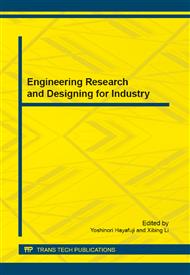p.3
p.10
p.18
p.28
p.34
p.41
p.48
p.57
p.66
Numerical Analysis of the E-Type Diaphragm Based on ANSYS
Abstract:
With finite element method, the numerical model of the E-type diaphragm was built in this paper. Based on the model, we got the shear strain law of the E-type diaphragm surface under uniform pressure. Taking it as elastic element and the FBG as sensing element, we made a FBG pressure sensor and obtained the experiment result. The result fit well with finite element simulation value. It shows that the finite element model in the paper is reasonable and effective. The model can be used to design and optimize the sensor.
Info:
Periodical:
Pages:
34-40
Citation:
Online since:
August 2014
Authors:
Keywords:
Price:
Сopyright:
© 2014 Trans Tech Publications Ltd. All Rights Reserved
Share:
Citation:


